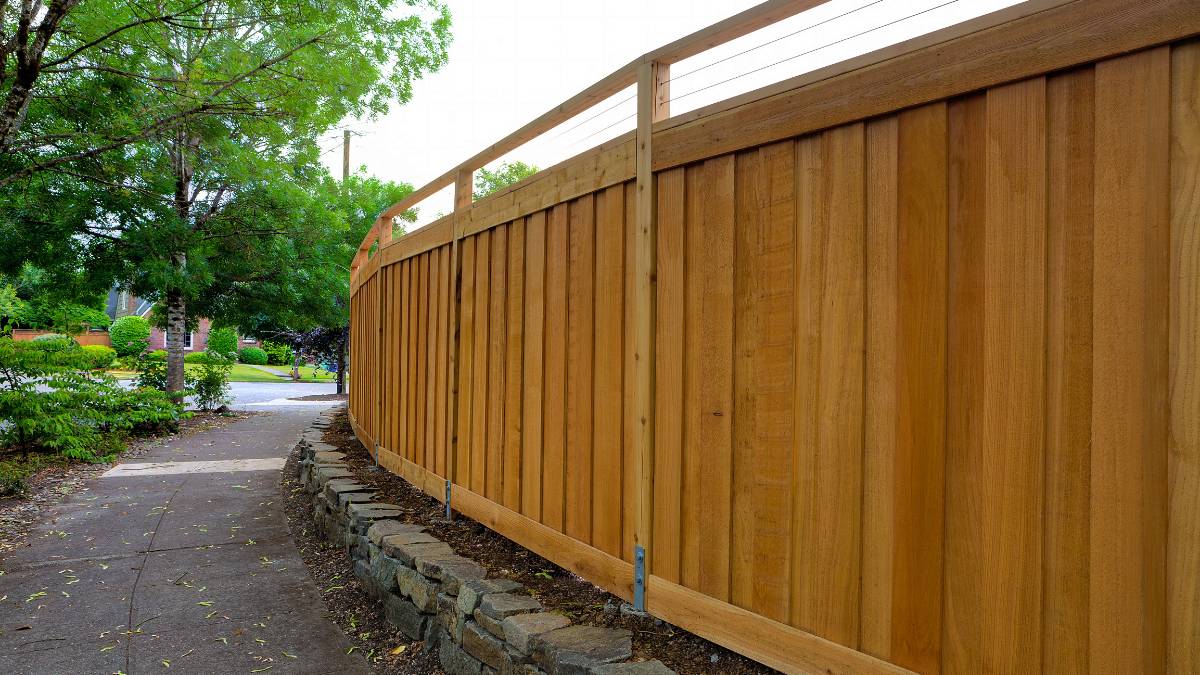Last Updated on March 22, 2024 by Kravelv Spiegel
Choosing the right wood fence for your property involves weighing factors such as durability, maintenance requirements, and aesthetic appeal. A good fence provides privacy and security and enhances the look of your home, blending seamlessly with its architectural style. With various types of wood available, each offering different textures, colors, and longevity, you need to make an informed choice. Here are the different types of wood commonly used for fences to help you make an informed decision:
Cedar
This type of wood fence provides natural oils that serve as repellents to insects while also offering resistance against decay. This helps contribute to its long lifespan even in varied climatic conditions. Cedar’s ability to resist moisture absorption prevents warping or shrinking over time, maintaining its original shape and structure. The aesthetic appeal of this type of wood has rich grain patterns and warm tones. This allows it to complement any landscape or architectural style. This wood has durability qualities and minimal maintenance requirements, which makes it a cost-effective choice. If you prioritize aesthetics and longevity in your fencing materials, cedar is a suitable option.
Redwood
Like cedar, redwood also contains natural preservatives that enhance its durability and make it resistant to decay, insects, and moisture. This resilience allows them to remain robust and visually appealing over time. Redwood may require maintenance to preserve its color and protect it from the sun’s UV rays. This periodic maintenance can be in the form of periodic sealing or staining. Periodic maintenance allows fences made of redwood to help last for decades. This can be a good choice if you are willing to invest in long-lasting durability and functionality.
Pine
Due to its susceptibility to rot and decay, pine may be a cost-effective material for fencing. When pressure-treated, insect damage may be reduced. This treatment process involves infusing the wood with chemicals under high pressure, protecting it from ailments that affect untreated wood. Pine’s softer nature compared to hardwoods, like cedar and redwood, makes it easier to work with during installation. To maintain its appearance and longevity, pine fences can require consistent care. This includes regular paint or stain applications to prevent moisture absorption and UV damage. Its affordability and the option for chemical treatment make it viable, providing a balance between cost and performance.
Spruce
This type of wood has a light color and even texture, which provides a clean, uniform look. It offers an attractive option for homeowners seeking a more affordable fencing solution. Its tendency to warp or decay necessitates a proactive approach to fence care. This can include regular painting or staining and the application of a water-repellent finish to protect against moisture. Its initial cost savings and the straightforward installation process make it a good choice. With proper care, a spruce fence can serve as a durable and aesthetically pleasing boundary for many years.
Choose the Right Wood Fence for Your Home
Selecting the right wood for your fence depends on balancing appearance, durability, maintenance, and cost. Whether you prefer natural elegance or affordability, there’s a wood fence material suited to your needs and preferences. Consult a fencing professional today to help you choose which material aligns with your aesthetic and functional requirements.

